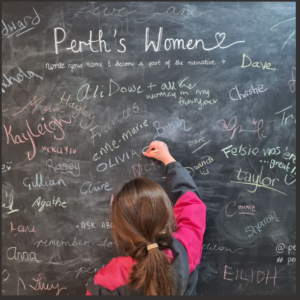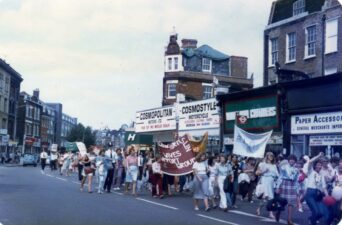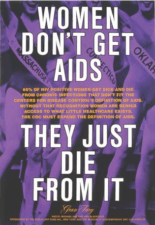In October of 2021 I made the decision to start my town’s first Women’s History Museum. Why? Because there is more recognition of fish in Perth than there is of Women. Sadly, I don’t think that that fact will surprise anyone and, since pointing it out on the front cover of my local newspaper, I’ve been jovially titled the “feminist fish hater” amongst friends and family.
I had always been fascinated by history and heritage. Like many people I’m in a constant state of untangling exactly who I am, what it means to be me and what it means to be a woman. The past is a great place to start in this untangling process.
I had undertaken a year-long traineeship with the British Museum as a Museum Futures Trainee. On this journey, I found myself lost in the collections of my local museum – Perth Museum & Art Gallery. I was particularly captivated by the photography collection and its ability to make me view the streets I’d travelled since birth with completely new eyes. I saw the areas I grew up in and the soft faces of those who had come before me. After some time idling amongst lantern slides and polaroid pictures, I was struck by the lack of stories extending beyond some of the images. It will come as no surprise that the images I often found this problem in were those of women.
Being in the privileged and unique position to delve into the Museum’s collection, I took this as an opportunity. What I found was an inspiring, colourful, brave and never-ending cluster of incredible women and their stories.
Victoria Drummond (1894-1978), for example, born in Errol and undertaking an apprenticeship at Perth’s Northern Garage was the UKs first female marine engineer. Local woman Jessie Valentine (1915-2006) was once ranked the number 1 women’s golfer and first to be awarded the MBE for golf. The famed model Effie Gray’s (1828-1897) home still sat in its original grandeur. Marjorie Dence (1901-1966) had been the first woman to run a theatre company in Scotland, Evelyn Stewart Murray (1868-1940) researched and produced the most important account of local folk tales and dialect, as a schoolgirl June Telford (unknown) worked as a joiner, Fiona Bayne represented Great Britain at the 1998 Winter Olympics, Rachel Weiss opened the world’s first Menopause Cafè and I could go on (and on and on).
I was in disbelief that these stories were lost to the public. And thus, the idea for the Perth’s first Women’s History Museum was born. A dedicated space to shine a light on incredible Women past and present, an educational resource for future women and, most importantly, a protest against the lack of female representation in Perth & Kinross.
After some research and conversations, I was granted space and time in an empty shop on Perth High Street by Perth & Kinross Council to make it happen. So, I got to work.
The museum took audience members on a journey of Perth past. Starting with the witch trials (14th-16th century), we created a map paying homage to all of the people wrongly tried and executed as witches, ensuring that we named each person. This became an interactive section of the museum. Visitors were encouraged to read the individual names and more often than not we found that visitors shared the surname of those on display – bringing this history much closer to home -. We travelled through the stories of Victorian and pre-suffrage women. We acquired objects from Perth Museum & Art Gallery that had never been on public display before, including a Suffragette petition “praying that the force feeding of Women may be stopped”. We celebrated the individual war women whose stories are often left out of history books – Mabel Lee Milne (1886-1917) whose “gallant and distinguished work”, according to Sir Douglas Haig, saved the lives of many at St Omer War Hospital. Another, Jean Valentine (1924-2019), left Perth for the first time to conduct secretive work at Bletchley Park, work we now know to have been instrumental in the war effort. Toward the end of the Museum we looked forward to the present-day women making changes to our society today.
It was a huge success and a privilege to watch mothers, daughters, grandmothers, sisters and friends feel comfortable enough to make the space their own. What had started as a protest has flourished into a community of people who are dedicated to championing women’s history. This doesn’t mean that the work is complete. There is still much to be done to achieve gender equality in our recognition of Perth’s history.
Creating a Women’s History Museum is great but it’s not the be all and end all. Museums are often a place that many feel excluded from for a multiplicity of reasons and we must recognise that. Feminism reaches beyond the boundaries of gender binaries and to achieve our goal there is still much to be done. At this moment, we are working to create a community-led project that will result in a women’s walk around Perth – allowing local women to curate their immediate landscape with their own stories and act as a revolutionary resource for local education.
I’d love to give some really profound advice to wrap up this short timeline of events that has led me to creating my town’s first Women’s History Museum but I can only offer practical steps and a loud suggestion. First of all, utilise the people and the spaces around you. More often than not there are people just like you who can offer exciting ideas allowing you to snowball your ambition into reality. Many local councils offer space to community initiatives, don’t be afraid to ask or make use of your local community centre’s – if they are similar to those in my town they are in desperate need of loving, community-led initiatives to throw their doors open once again. Finally – be bold, take up space and do it despite the little voice in your head. If 2021 taught the museum sector anything it’s that change is needed and imminently. Be that change.
Biography: Founder of Perth’s Women, Taylor Waggoner, is a recent graduate of the Royal Central School of Speech and Drama. Working as a Creative Practitioner she has a keen interest in utilising the strengths of local communities to work in new and exciting ways.


